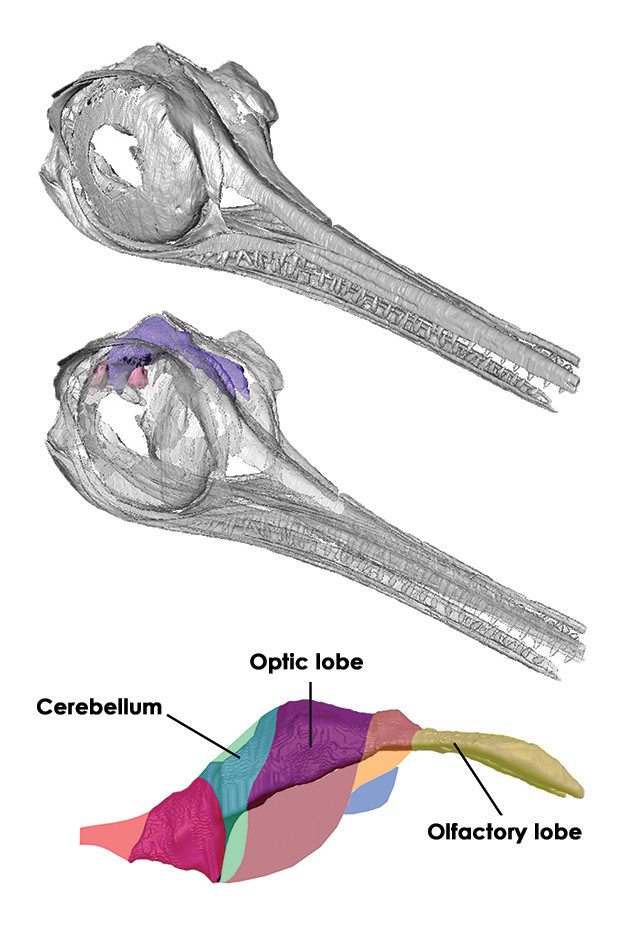
by Mary Caperton Morton Friday, April 1, 2016

The combination of an unusually well-preserved skull and CT scanning technology has produced the clearest image yet of an ichthyosaur's braincase. Credit: University of Bristol.
While the dinosaurs were busy ruling the continents in the Mesozoic, an order of marine reptiles known as the ichthyosaurs ruled the oceans. Ichthyosaurs are well known from numerous fossils, but they are often found flattened, limiting researchers’ ability to study the skulls and braincases as they existed in life.
Now, in a recent study published in Palaeontology, scientists have used computerized tomography (CT) scanning to piece together a 3-D image of a well-preserved 180-million-year-old ichthyosaur skull, and the findings are shedding light on how the reptile’s brain was adapted for life in the water.
“The fossil is incredible — its skull is in a good enough condition to use the latest visualization techniques, allowing us to carry out work that’s never been done on ichthyosaurs before,” said lead author Ryan Marek of the University of Bristol in England in a statement. The specimen, originally discovered in the 1800s in southern England, came from an ichthyosaur from the genus Hauffiopteryx. Marek and his colleagues scanned the fossil to create the first digital endocast, or “ghost image,” of an ichthyosaur braincase. The image revealed that Hauffiopteryx’s optic lobes and olfactory region were notably enlarged compared to terrestrial reptiles, indicating that the animal relied on acute sight and a powerful sense of smell to navigate the ocean and locate its prey.
© 2008-2021. All rights reserved. Any copying, redistribution or retransmission of any of the contents of this service without the expressed written permission of the American Geosciences Institute is expressly prohibited. Click here for all copyright requests.